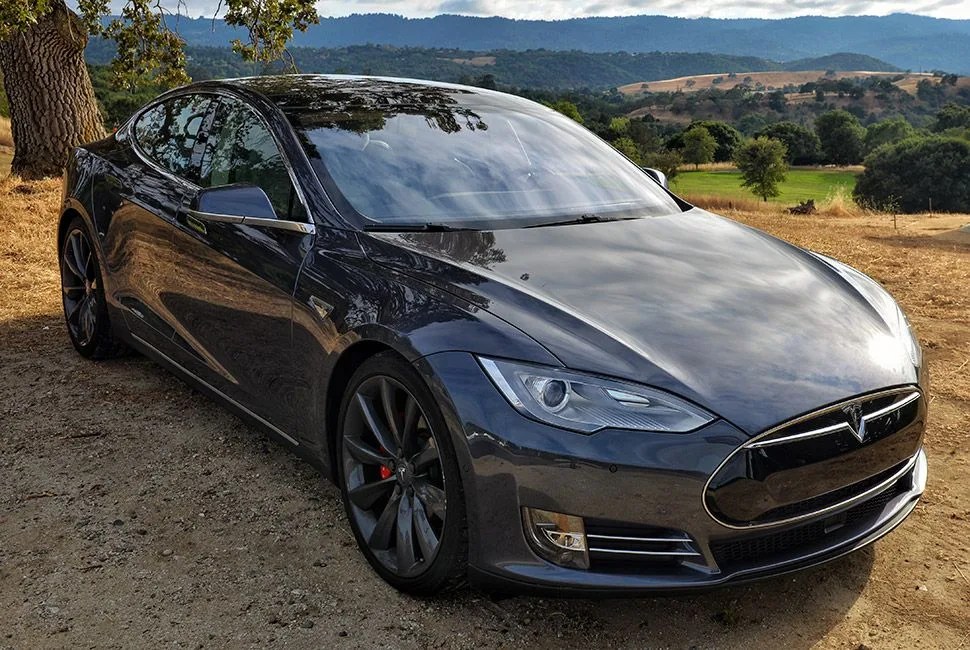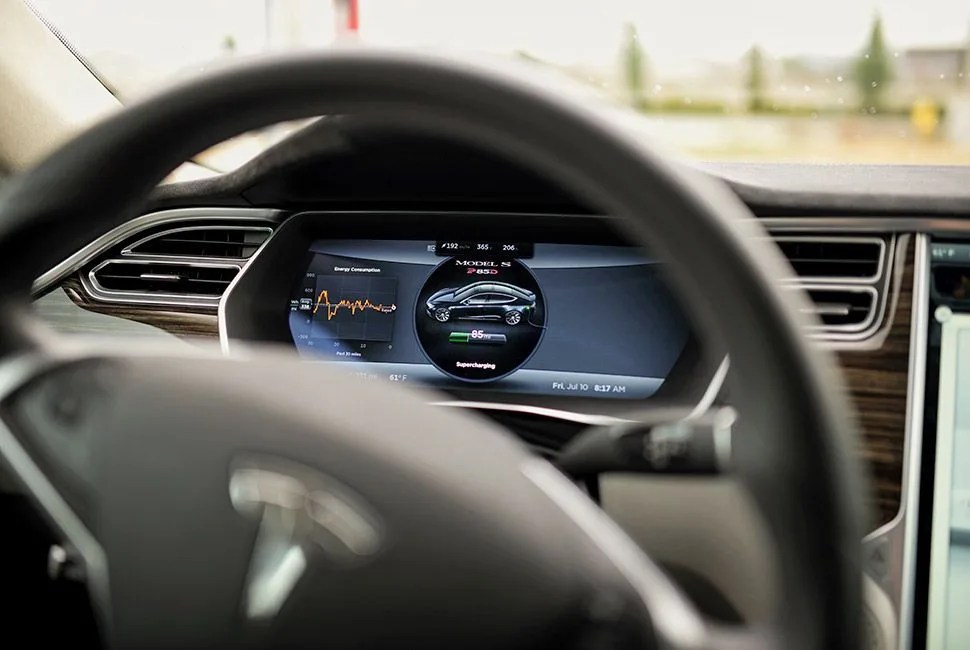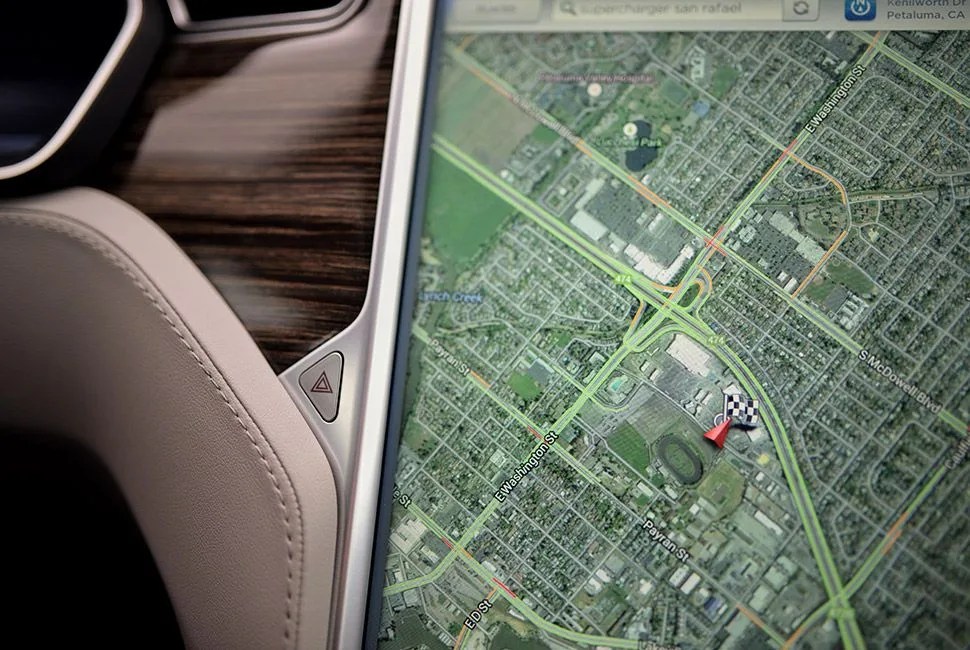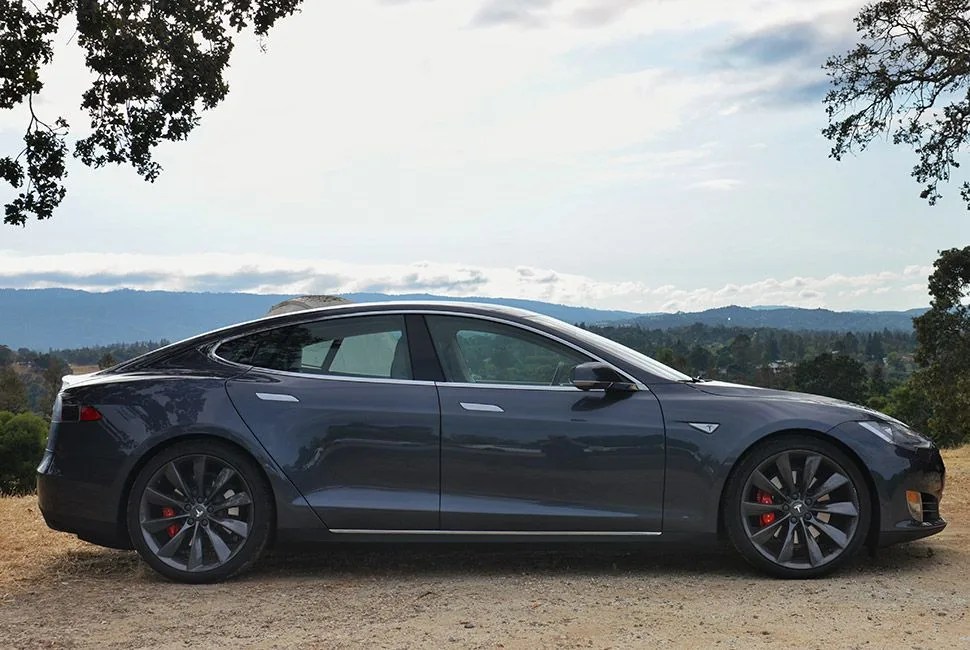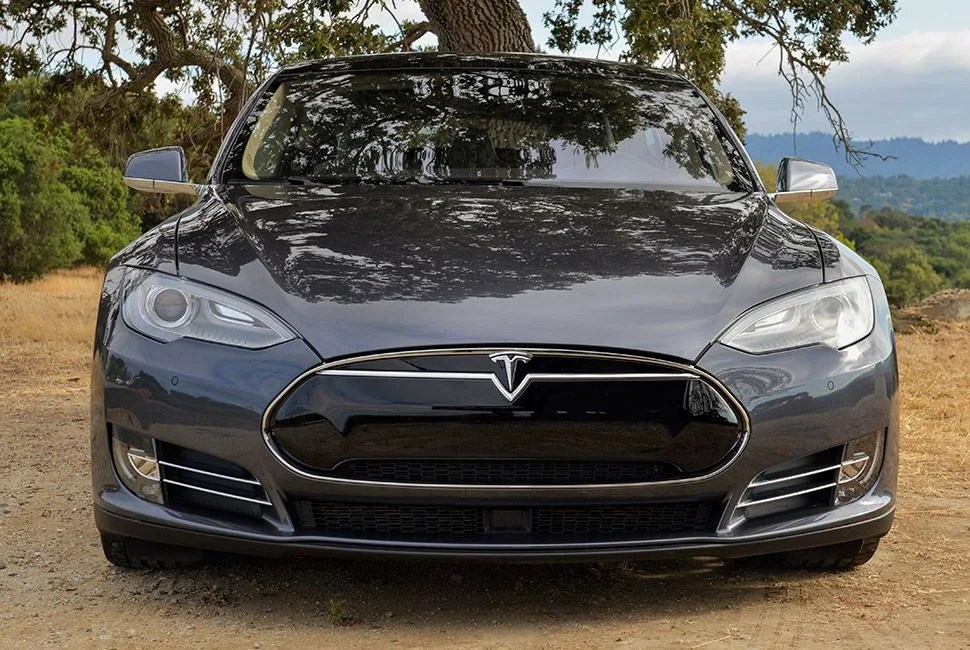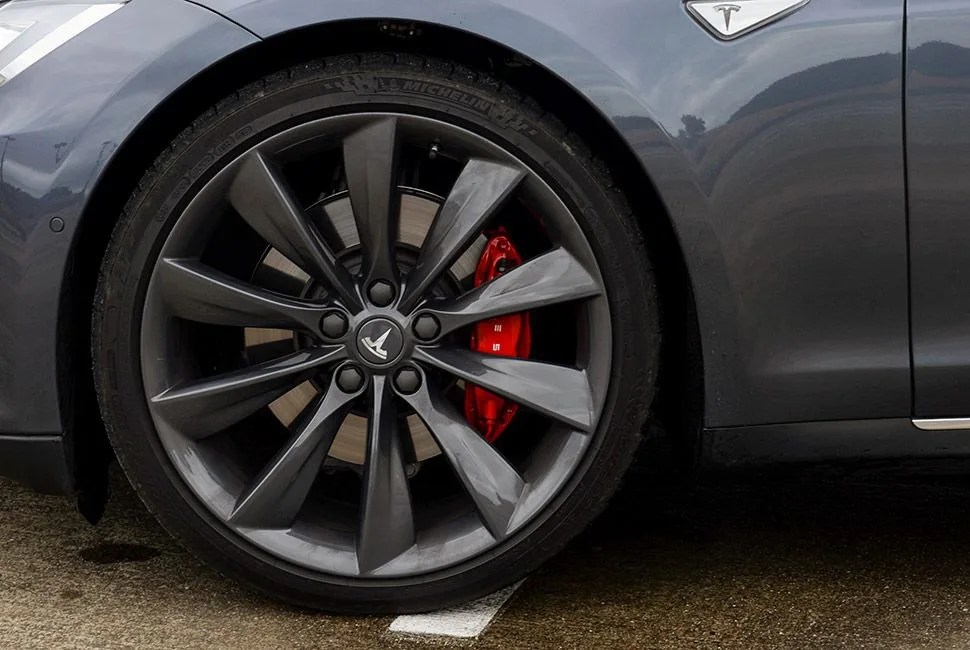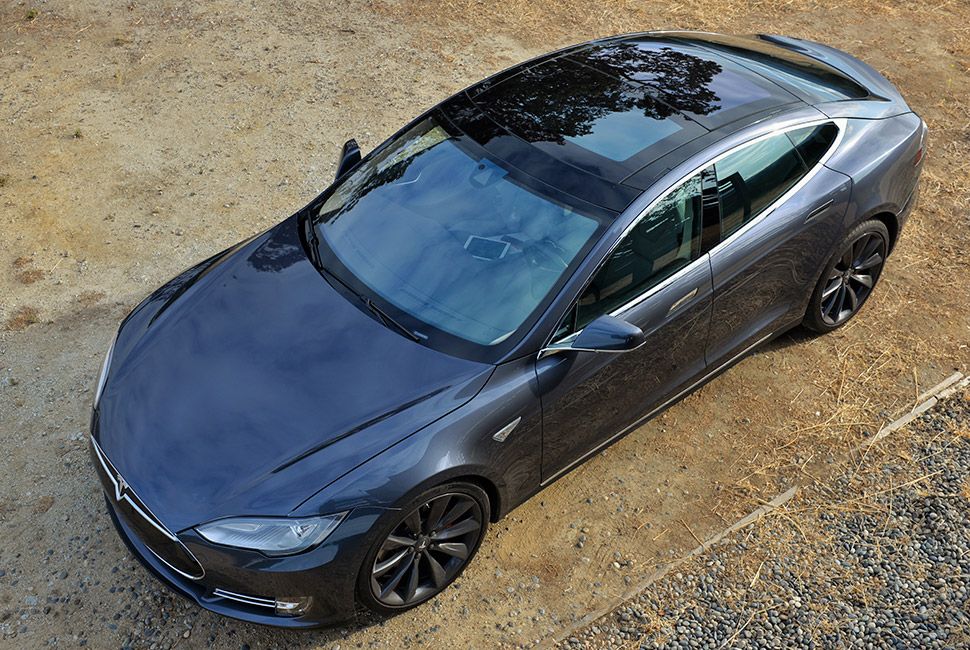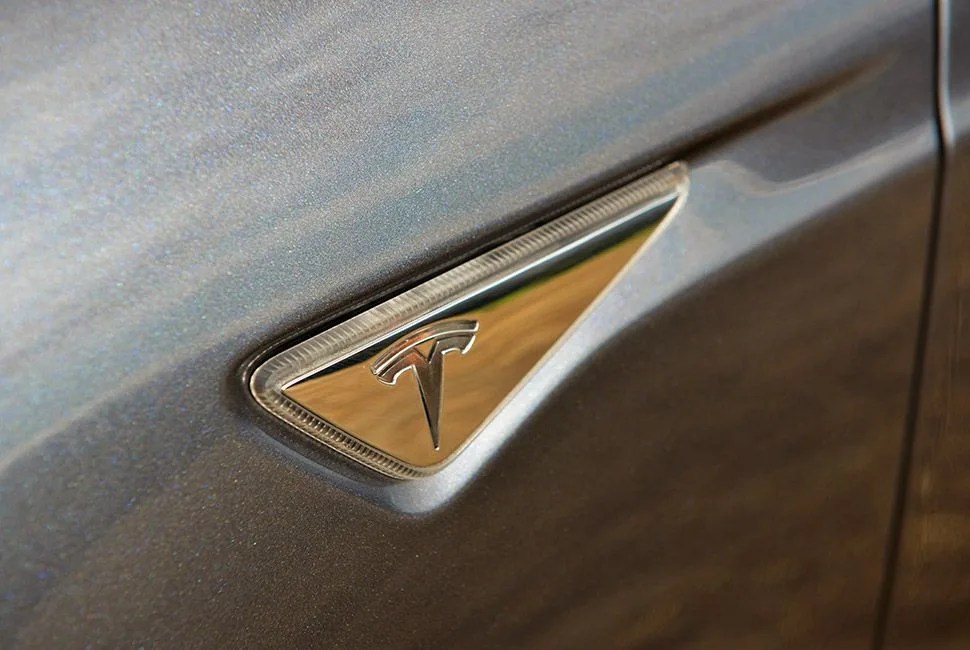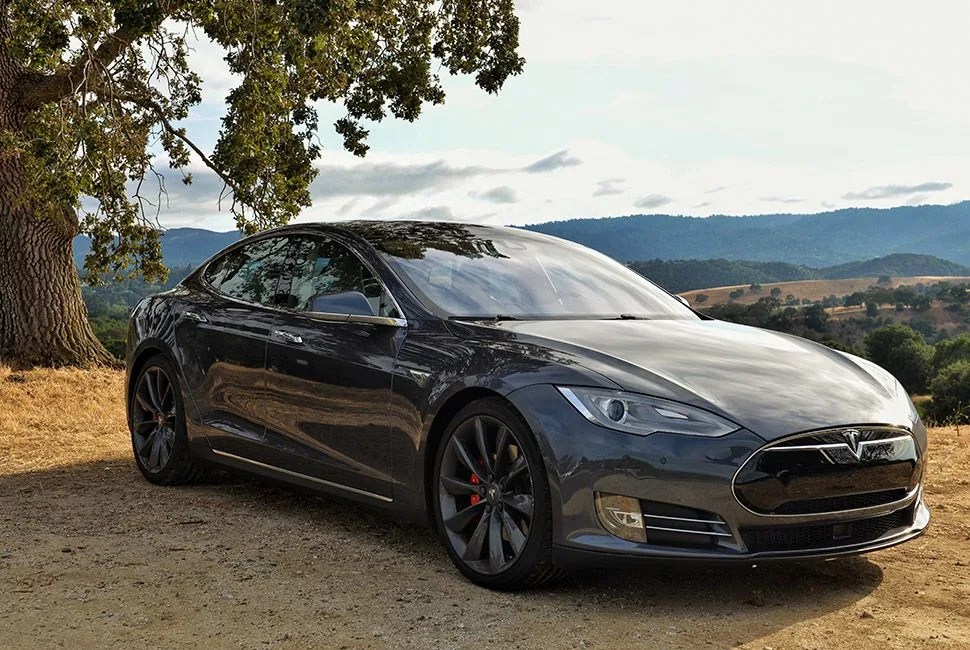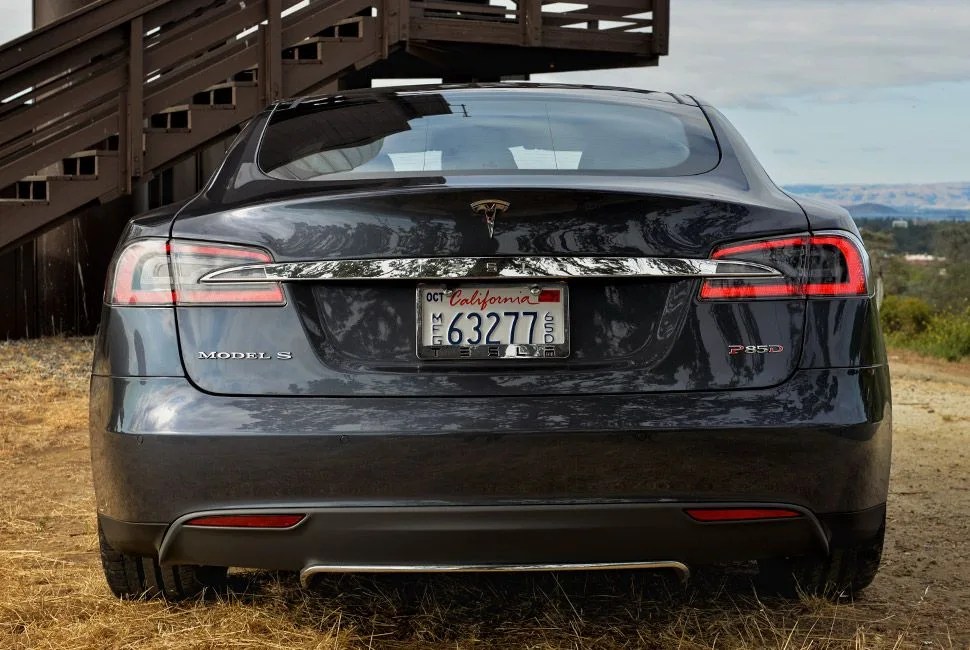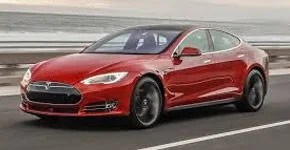11 photos
I recently spent several days driving the Tesla Model S — the torqued-up, all-wheel-drive P85D ($105,000) version — around Silicon Valley. I wafted up and down Bay Area freeways in electric silence, the car’s smooth adaptive cruise control doing everything but steering, and thus taking the edge off of the occasionally atrocious California traffic. (Full Autopilot is coming to Tesla soon, eventually permitting on-ramp to off-ramp autonomous drive.) The roads in and around the tech world’s epicenter are, of course, dappled with Model S’s by now, and for a few days I felt part of the SV/EV in-crowd.
My Tesla a-ha moment, however, came in a parking lot. Needing to charge up my loaner after nearly exhausting its 240-mile range, I called up the list of Tesla Superchargers on the car’s oceanic 17-inch central touchscreen display. Knowing jack shit about the geography of Silicon Valley, I picked one more or less at random, in Mountain View, and drove there in about 20 minutes. When I pulled in, the free high-speed charging stations were nearly full. Every Model S trim level was on display. I pulled into one of the few unoccupied slots, got out, and plugged my car in. It said I had about 50 minutes before it would be ready to go.
I looked around and noticed two things: 1) More than half of the Tesla owners were actually sitting there in their cars waiting for them to charge, either napping, goofing off on their phones, or, in one case, changing a diaper in the back seat; and 2) I was in the parking lot of the Computer History Museum.
It’s simply the best car in the world. Was then; is now.
On the first point, I had naturally assumed that most Tesla drivers plug their cars in and toddle off to shop in glamorous stores or crack open laptops while sipping coffee somewhere. But there they were, with no inclination but to sit and wait it out. These were daily users, long past the initial buzz of Tesla novelty. It was both a distinctly fresh and futuristic sight, as well as a sign that we’re on the brink of a new normal.
With no need for sleep, no blasé familiarity with the area, and no diaper to change, I went to check out the museum. Because it’s a Tesla, you can just walk away from the car with the key fob in your pocket, and it will retract the door handles and lock itself up. I spent the next hour strolling through the exhibits in the museum, which covers a lot of ground — early computer tech, lots of industrial-grade mainframe business (that I can only vaguely grasp) and plenty of personal tech (the Apple II that I used in middle school, the Commodore 64 that I had at home, the $100 Timex Sinclair that I saw advertised on the back pages of countless magazines). When I was done perusing, I returned to the Model S in the parking lot charging station. I unplugged, hopped in, and silently left for my next appointment.

